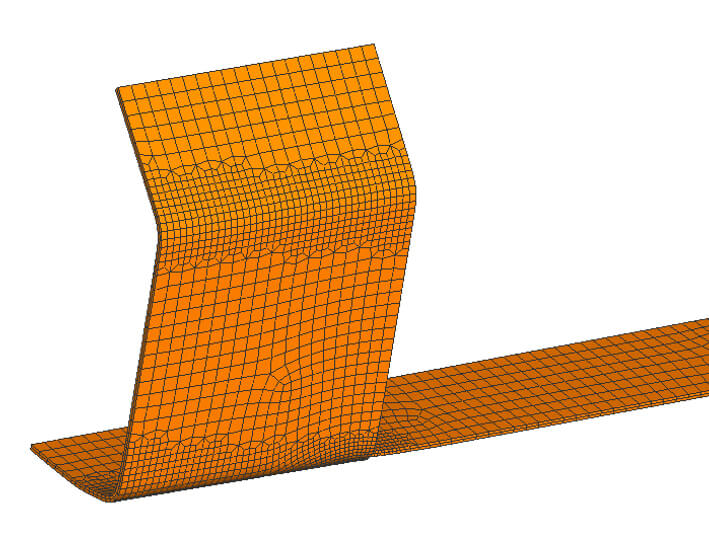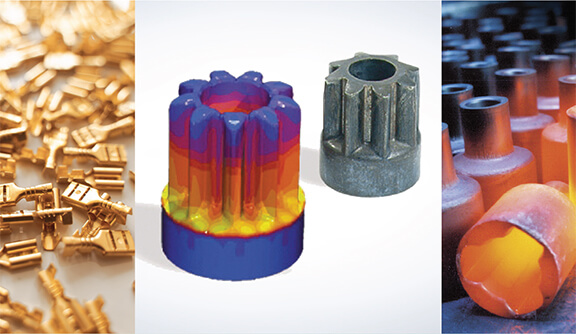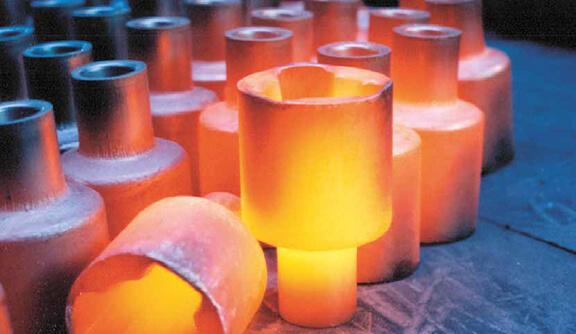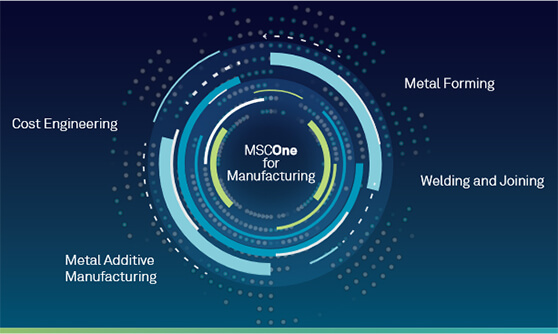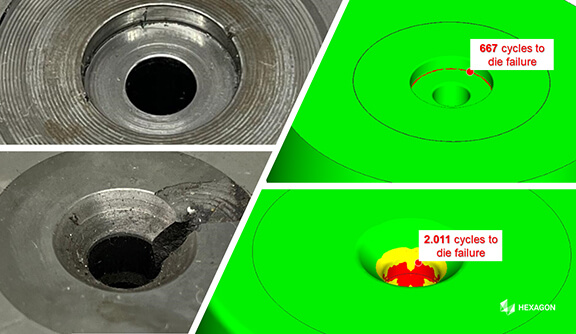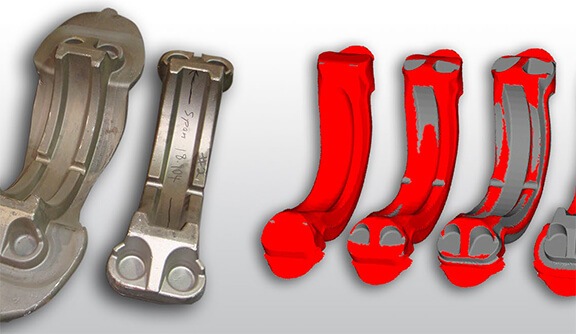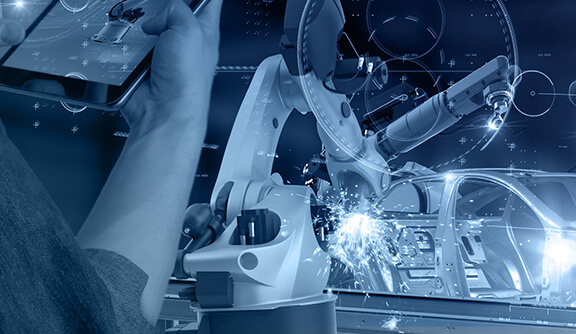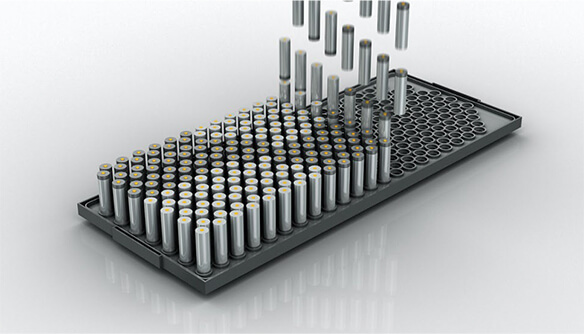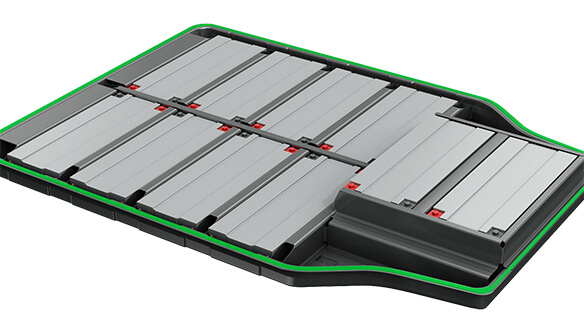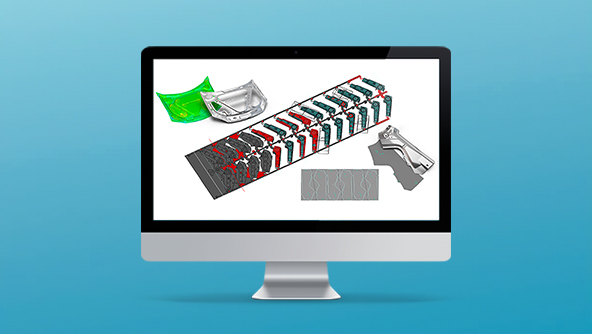Simufact Forming
Specialised forming simulation software for virtual testing and process design for component optimisation
Metal Forming Excellence
Advanced simulation software orchestrates metal forming, unlocking the art of successful cold forming, hot forging, rolling, and stamping.
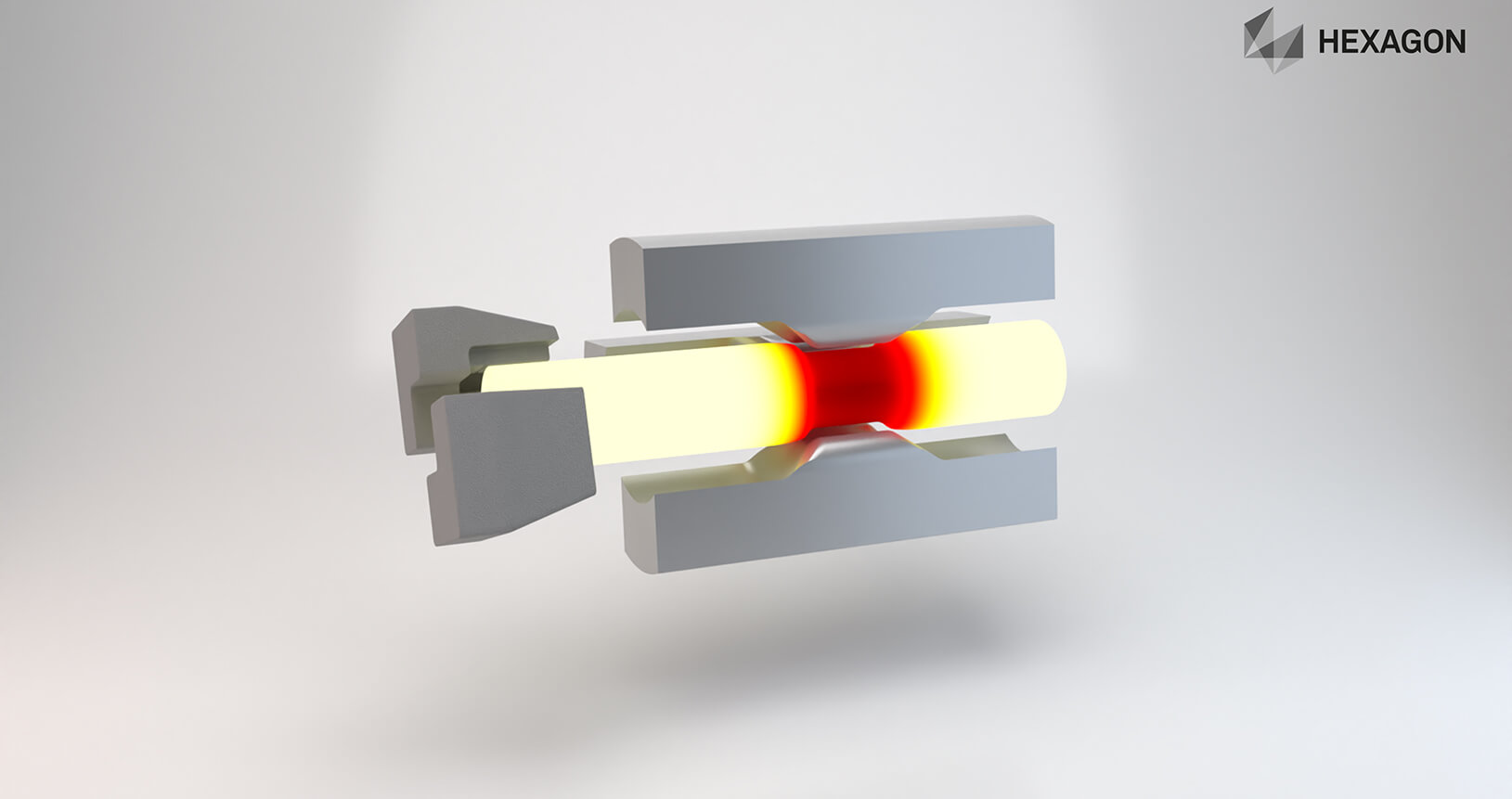
![]() Simufact Forming 은 성형 기술과 관련된 모든 영역을 포괄합니다. 모든 도구 및 부품을 3D로 표현하는 것은 물론, 완벽한 3D 기능을 통해 제조 프로세스를 사실적으로 묘사해줍니다. 또한 아래와 같이 프로세스에 영향을 끼치는 주요 요소들을 인지해 정확한 시뮬레이션을 수행할 수 있습니다.
Simufact Forming 은 성형 기술과 관련된 모든 영역을 포괄합니다. 모든 도구 및 부품을 3D로 표현하는 것은 물론, 완벽한 3D 기능을 통해 제조 프로세스를 사실적으로 묘사해줍니다. 또한 아래와 같이 프로세스에 영향을 끼치는 주요 요소들을 인지해 정확한 시뮬레이션을 수행할 수 있습니다.
- 기계의 역학적 움직임
- 소성, 속도 의존성 및 온도에 의한 영향을 모두 반영한 공작물의 비선형 재료 거동
- 도구와 성형 부품 사이의 마찰 및 접촉
- 폴드(fold)를 예측하기 위한 성형 파트의 셀프 컨텍(Self-contact)
- 열역학 과정 : 초기 가열 조건, 성형 에너지 및 마찰로 인한 온도 상승, 도구와 공작물 및 환경 간의 열 전달

여러 모듈을 사용해 관심 있는 프로세스를 처리 할 수 있습니다. Forming Hub의 핵심 모듈에는 시뮬레이션 소프트웨어 (GUI, 솔버, 소재 데이터베이스 등)의 작동 및 처리 능력에 필요한 핵심 기능과 냉간 성형 및 열간 단조 시뮬레이션을 수행하는 기능이 포함됩니다. 사용자는 시뮬레이션 기능을 보완하기 위해 아래에 나열된 기능 중 하나를 선택할 수 있습니다.
- Sheet metal forming
- Rolling
- Ring rolling
- Open die forging
- Heat treatment
- Mechanical joining
다이 응력(Die Stress) 분석 및 미세 구조 계산,보다 빠른 성능, CAD 불러오기, 커스터마이징 및 재료 데이터베이스 액세스에 도움이 되는 추가 모듈을 이용할 수도 있습니다.
Exactly the right forming process you need
Forming processes conducted significantly below the recrystallisation temperature of the material. These processes include typical upsetting and extrusion processes (e. g. for the production of bolts, nuts and rivets), but can also include coining, cold hobbing, thread rolling and last but not least drawing processes (e. g. wire drawing, tube drawing and profile drawing).
Forming processes conducted above the recrystallisation temperature of the material. A typical process is hot forging, including closed die hot forging, auxiliary processes such as heating and cooling, cutting processes and preform operations (e. g. upsetting, bending, forge rolling and cross wedge rolling) as well as extrusion processes.
Different methods of sheet metal forming can be used depending on the geometry of the desired part. Based on the characteristics of each deformation process, the forming engineer can choose between: Deep drawing, ironing, punching, bending, stamping, and a variety of other manufacturing processes. Due to the geometric complexity of the parts being manufactured, additional multistage forming that combines different processes is frequently required within a phase of production. Therefore, production is usually achieved by automated transfer or stage pressing, or by progressive tools.
Forming processes in which the shape of the workpiece is changed incrementally (i. e. step-by-step) by repeated, local forming using geometrically simple dies which move relative to the workpiece. Open-die forging includes among others cogging, radial forging, rotary swaging, shell forging and rotational partial forging.
Rolling
Forming processes in which the material is formed between two or more rotating dies (rollers). Examples of rolling processes include; flat and profile rolling, spinning, flow forming and reduction rolling.
Ring-Rolling
Special rolling method for the manufacturing of seamless rings with related sub-methods such as; radial ring rolling, radial-axial ring rolling and axial closed die rolling.
Methods in which, metallic workpieces (mainly steel pieces) are temporarily heated for the targeted improvement of the material’s properties.
Quench Temper
Quench temper enables the simulation of complex heat treatment processes with all necessary stages. In each of them the respective temperatures and heat transfer coefficients of resp. to dies and (furnace) environment can be specified in many ways as constant or changing.
Case Hardening
Case hardening enables the simulation of direct hardening processes with all necessary stages. In each of them the respective temperatures and heat transfer coefficients of resp. to dies and (furnace) environment can be specified in many ways as constant or changing.
Induction Heating
This process type allows the modelling of an inductive heating process and therefore a more precise estimation of the resulting temperature distibution.
Mechanical Joining
Forming processes that cause a mechanical interlock between the pieces. Mechanical joining includes riveting methods such as; punch riveting, self-piercing riveting and blind riveting, as well as clinching technologies such pressure joining, clinching and toxing.
Resistance Spot Welding
A pressure welding process during which the sheets are pressed together locally with the help of fitted copper electrode welding guns. The electrical current between the weld guns causes a heating and melting of the joining partners, creating a small circular welded area between them.
Pressure Welding
Methods in which, metallic workpieces (mainly steel pieces) are temporarily Pressure welding stands for a group of joining processes in which components are joined by heating and compression. Heat can be generated either via current (resistance welding) or by using friction (friction welding) for the targeted improvement of the material’s properties.
Your benefits with Simufact Forming
Design and optimise your forming process:
- Determine the optimal number and sequence of stages and process window with minimal material usage while ensuring a robust manufacturing process.
- Identify and eliminate potential manufacturing defects.
- Optimise tool life.
Simplicity – No expert knowledge required as the software solution is designed to be user-friendly, intuitive and process-oriented.
Sustainability – Save material, time and money by replacing expensive and time-consuming physical tests with virtual tests.
Research Projects
Learn more about Simufact Forming
Related Articles
Technical Article
High temperature quality inspection
White Paper
Reducing costs through virtual simulation
Flyer


